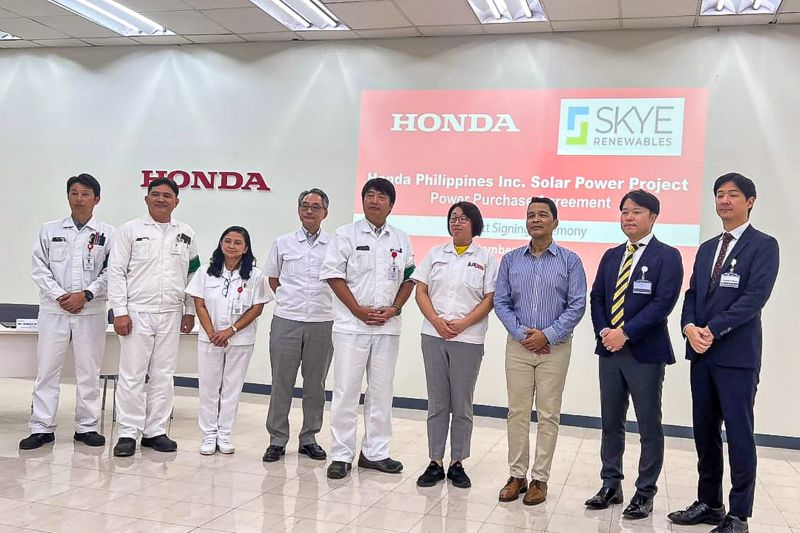Installation will begin soon on the 225.06kWp system, which is expected to generate >2.7GWh of renewable power over the life of the contract, helping Decathlon to significantly reduce CO2 emissions.
News and Media
Honda selects Skye Renewables to be its solar partner in Philippines
- Skye Renewables
- December 5, 2023
The solar system will be 1,057kWp and should generate ~15GWh of renewable power over the life of the contract. This aligns with Honda’s sustainability ambitions and will significantly directly reduce
Skye Renewables to support MFS Technology’s solar plans
- Skye Renewables
- November 17, 2022
MFS Technology, the leading electronic component manufacturer, has selected Skye Renewables to be their solar development partner in Malaysia. Under the PPA agreement, Skye will install a new 808.5 kWp
HSL Constructor and Skye Renewables sign PPA for solar in Singapore
- Skye Renewables
- July 19, 2022
HSL Constructor, a leading regional infrastructure construction company, has selected Skye to deploy solar on their main site in Singapore. The long-term power purchase agreement will be for a system
Skye Renewables agrees PPA with EduCity in Malaysia
- Skye Renewables
- July 18, 2022
We are delighted to announce that Skye Renewables has entered into an agreement to build a 649.6 kWp rooftop solar system at the University of Reading building, which is part
Skye Renewables Enters into Partnership with Idemitsu
- Skye Renewables
- July 12, 2022
An exciting day for Skye. Under the agreement, Idemitsu will invest through its wholly owned subsidiary to jointly develop commercial and industrial (C&I) solar projects across Southeast Asia with Skye,
Malaysia to be Carbon Neutral by 2050
- Skye Renewables
- September 28, 2021
The transition towards a greener economy using renewable energy sources remains at the core of Malaysia’s socio-economic development. Some interesting renewable energy related points highlighted in the document from the
Why Companies Should Consider Rooftop Solar Energy (And Why They Shouldn’t Wait)?
- Skye Renewables
- September 27, 2021
Located close to the equator, Malaysia, Philippines and Vietnam are blessed with consistent sunshine throughout the year, which makes them ideal solar power development. It should be a ‘no-brainer’, but







